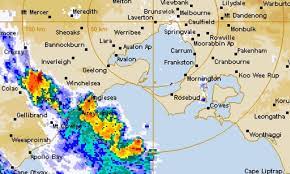How does Bom Melbourne radar work?
The fundamentals of radars are that a beam of force, called radio waves, is released from an antenna. As they smack objects in the environment. The energy is spread in all directions, with some of the force reflected openly back to the radar.
Bom Melbourne radar works by sending out two vertical beams of microwave rays into the atmosphere. A few of the radiation be a sign of off objects in the environment—rain, hail, blizzard; you name it—and proceeds to the box Melbourne.
Radar measures the potency of returning rays and how long it takes to get better to verify the precipitation’s location and strength. The nature of the beam, which looks like a plus sign if you consider it head-on, also lets the bom Melbourne radar sense the size and shape of the objects it discovers, which is functional in spot hail and cyclone debris.
The most excellent way to stay safe from dangerous weather, whether climbing or going around at home, is to provide a good bom Melbourne radar for your phone and discover how to read what it’s significant to you.
Look at More Than Just rainfall.
Everybody who’s ever used or watched a weather estimate on TV knows the basics about marking precipitation on weather-radar descriptions. The most color range is easy rainbows, and radiator colors indicate heavier rainfall.
On the other hand, just looking at the rainfall alone won’t tell you the whole thing you must know regarding a storm. An area of dark red moving to your location means there’s a downpour on the way. A line of significant rainfall moving in unison symbolizes a squall line that could pack windy winds.
A storm that appears as a fishhook is principally concerning. The BoM radar Melbourne image shows a typical supercell—a heavy shower with a revolving updraft—in Alabama on any date. The revolving updraft allows the storm to make large hail, high storm gusts, and intense cyclones. This specific thunderstorm formed an EF-4 tornado with probable winds of 180 miles every hour. (EF submits to the Enhanced Fujita degree, which rates twister scratch from 0 to 5.)
Know What’s about Inside a Storm:
In the 1990s, weather-radar expertise developed adequately to let us see the breeze within a deluge. Using the BOM radar Melbourne effect to calculate how fast and in which way rain, hail, and blizzard are moving, it can precisely tell us the wind tempo and course of a storm.
Velocity images are critically important, as they tell you what’s about inside a storm. Which you wouldn’t intrinsically know just by looking at the rainfall. This technical advance has saved numerous lives over the past pair of decades.
The windstorm that hit Greensboro, North Carolina. In April 2012 is an excellent example of why looking at the wind within a storm is so significant. The BoM radar Melbourne image shows rainfall within the line of a downpour while the EF-2 cyclone was in progress.
BoM radar Melbourne
Nothing appears too doubtful, right? But studying the rain alone is misleading. Once you turn over to velocity imagery and watch the wind swirling inside the storm. It becomes evident that there’s a twister on the ground.
A velocity description is almost always displayed with red and green colors. Red shows blustery weather blowing away from the BOM radar Melbourne, and green shows winds blowing toward it. Stronger winds are usually associated with brighter colors on the boxing radar Melbourne imagery. You can spot revolving and a possible tornado in a cloudburst by looking for strong winds blowing in particular directions right almost each other. Dazzling colors all moving in one way signify harmful straight-line blustery weather like you’d see in a squall line.
Like any tool, there are boundaries. Mountains are an essential barrier to box radar Melbourne uses in the western United States. Vast swaths of land in Oregon, Nevada, and Utah have slight helpful radar exposure at the lesser levels of the environment due to the region’s rough terrain. Which can make it more complicated to mark hazards in these areas.
The elevation of the BOM radar Melbourne beam itself also presents a challenge. The beam gets higher off the ground with coldness as it distances itself from the BOM radar Melbourne because of the twist of the Earth.
This means that the BOM radar Melbourne beam is beyond 10,000 feet once it’s a few dozen miles away from the radar position, making it tricky to see the low-level attribute in thunderstorms, like injury winds and tornadoes, particularly in parts of the Plains and Midwest where comparatively poor radar exposure coincides with numerous cloudburst activity. Visit The Australia Time for more details.


